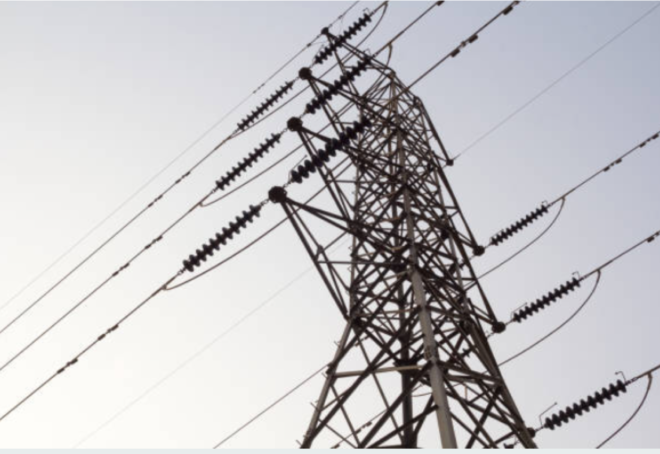Power line noise at 50 and 60 Hz is bang in the middle of the spectrum of brain activity and is often picked up by EEG sensors. This has constrained and hindered decades of EEG research.
Much of how we measure, analyze and interpret electrical signal from the brain has been constrained and shaped by one critical element – the frequency of power lines. This sounds odd of course, but here is why: All electricity transmission through the power grid today works on an alternating current (AC) system where the direction of charge flow is flipped periodically using a sinusoidally varying current and voltage. The frequency of this alternating current is typically 50 Hz (in Europe) and 60 Hz (in the United States) and is invariably picked up by the EEG sensors. (In China you also find use of 100 Hz and 150 Hz too I’m told).
Now 50 and 60 Hz are, unfortunately, bang in the middle of the range of the signal frequencies produced by the brain and ignoring power line activity embedded in the signal can result in all sorts of potentially distorted conclusions about what is going on. The field of EEG research has therefore adopted the following workarounds using them individually or in parallel:
- Apply 50 and 60 Hz notch filters to selectively remove anything at those frequency ranges. (notch filtering)
- Filter out the signal above 50Hz (low pass filtering)
see related post Factors that Impact Power Spectral Density Estimation
Notch Filtering
Notch filters are technically meant to chop out the frequency of interest, but they are never absolutely specific to that frequency and conversely AC sine waves are not perfect either and vary a bit around an average frequency. It’s equivalent to having a picture that is behind a screen of somewhat regular blue stripes and basically applying an algorithm to get rid of all the blue in the image (plus a little bit of indigo and green as well because no algorithm can do this perfectly). Now you have to try and interpret this blueless image which you can kind of do at some level but not superbly. And any kind of signal filtering results in distortion of the signal in general.
see related post Pitfalls of Filtering the EEG Signal
Low pass filtering
Filtering out the signal above 50 Hz is a more dramatic resolution of this problem. Essentially it lobs off everything above 50 Hz. If we take the same picture analogy, it’s like taking out all the colors beyond say, blue. In fact, this is the most common practice in EEG – to only analyze signal under 50 Hz. Consequently, we have very little knowledge of what goes on beyond 50 Hz. The logic is that since the EEG power spectrum is a decreasing function, there is increasingly less power for higher frequencies so even with a 50 Hz cutoff you have access to the bulk of the signal. If we translate this to our picture analogy, maybe it just hides some of the accent colors which don’t matter too much. On the other hand, imagine a picture of a cloud where you have inadvertently removed the silver lining. That’s just a different picture.
Value in Higher Frequencies?
The other argument is that since higher frequency signals have lower power, they are increasingly difficult to detect anyway. Still, in the last decade folks have started looking at the signal between 60 and 300 Hz and there is evidence that it has some important relationships to cognition and disorder states such as epilepsy.
Who’s to blame?
We largely have Nikola Tesla to thank for this conundrum since he was the one who came up with this method of transmission. He was also the one who declared 60 Hz to represent the best compromise between safety and efficient transmission. Of course, Tesla did this work in the late 1800s before EEG was even a thing so we can’t explicitly blame him for compromising years of brain research. Also, EEG may not have worked at all without the power grid to begin with, so …
Shielding power line noise
The best solution really, would be to prevent the power line noise from being picked up in the first place. A fully electrically shielded room with no power outlets and a battery operated EEG would probably do the trick. However, that’s not cost efficient or practical but there are some EEG devices that are constructed to shield better than others. Some folks have suggested running around the room with a gauss meter to see where the noise is coming from and try to put in temporary shields or move away from those sources. There are ways to improve it but maybe not enough to eliminate the needs for these filters altogether.
And in conclusion..
Over all, power line noise is a pretty big nuisance in EEG research. There is still useful information that can be extracted from the signal despite it, but the more care that is taken to shield from it upfront the better. In some countries though, they haven’t even bothered to standardize and use all sorts of frequencies in different parts of their power grid from 25 to 60 Hz, at which point you may want to consider moving if you really want to do EEG research.


Tara, thanks.
Here is a 2013 review I came across recently, not specifically on mains noise, but on scalp EMG contamination. So just another consideration in getting valid high frequency EEG.
https://www.frontiersin.org/articles/10.3389/fnhum.2013.00138/full
High-frequency brain activity and muscle artifacts in MEG/EEG: a review and recommendations
William Croft, OpenBCI
I wonder about the source saying that China also uses 100 or 150Hz in the power supply. As a Chinese, I never heard of this. Here is also another interesting anecdote: Japen has two standards in use in parallel 50Hz in the East and 60Hz in the West.
There is one simple solution to the mains problem: Keep impedances below 5k ohms.